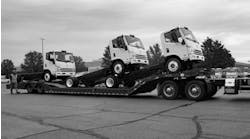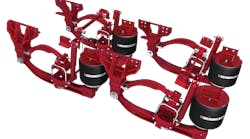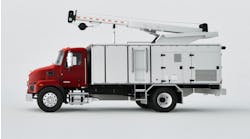The Mexican trucking industry is moving toward the more unconventional cabover engine model for the heavy-duty market. And in order to remain competitive in that market, Daimler Trucks Mexico has embraced the move.
Previously, Daimler announced that it would strengthen its position in Mexico’s truck market by adding two new cabover models to its Freightliner 360 portfolio of commercial vehicles – the Class 6 model 1217 and the Class 8 model 2528.
“Customers are saying they need mobility, flexibility and to get to secondary roads,” said Flavio Rivera, president and CEO of Daimler Trucks Mexico. “In Mexico the customer says ‘I need mobility. I need flexibility. I need to be ready to get to cities and to get to suburbs. I need to also have drivability and of course visibility.’”
According to Rivera, Freightliner currently owns 39.1% of the Mexican truck market. The country is estimated to move 552 million metric tons of freight by the end of 2017, 593 million tons in 2018, and 608 million metric tons by 2019. Rivera also noted Mexico expects to see a 2% increase in GDP for this year.
“We need to have trucks that can be easily driven in cities and on very narrow streets with very heavy traffic areas and that can be driven in the last mile,” Rivera explained. “We are responding with multiple approaches for cabover options. And now we are installing an entire country portfolio.”
Rivera noted that one in every five trucks sold in Mexico today is a cabover. And since 2009, nine brands have been bringing these “unconventional” trucks to the Mexican market. Some of those brands include Volkswagen, Hino, Foton, Hyundai, Freightliner, Kenworth, and Isuzu. Daimler also has focused on strengthening its dealer network and financial branch. Rivera emphasized that the company recently invested heavily in its dealer network facilities and manufacturing plants.
When it comes to improving the overall Mexican truck market, Rivera emphasized that the country needs to increase incentives to replace older trucks, which are on average 18 years old.
“We need to work with customers to promote renewing trucks in the window of five-to-seven years,” Rivera stressed, adding that older trucks are less fuel efficient and more difficult to maintain.
The company is also enhancing its emissions portfolio by incorporating technology into trucks that will be ready for the Mexican market beginning this year. Mexico is in the middle of changing its emissions regulations and will begin to adopt Euro 5 emissions standards. The phased-in process will begin in January 2019 through 2021.
In addition, Rivera noted that he doesn’t expect anything to happen regarding the North American Free Trade Agreement (NAFTA) this year even though President Trump has maintained the U.S. will renegotiate the deal.
“There are many factors that will make the market change going forward,” he said. “Mexico is always a challenging market and there is always an opportunity to do business, but different regulations will be coming in next year.”









